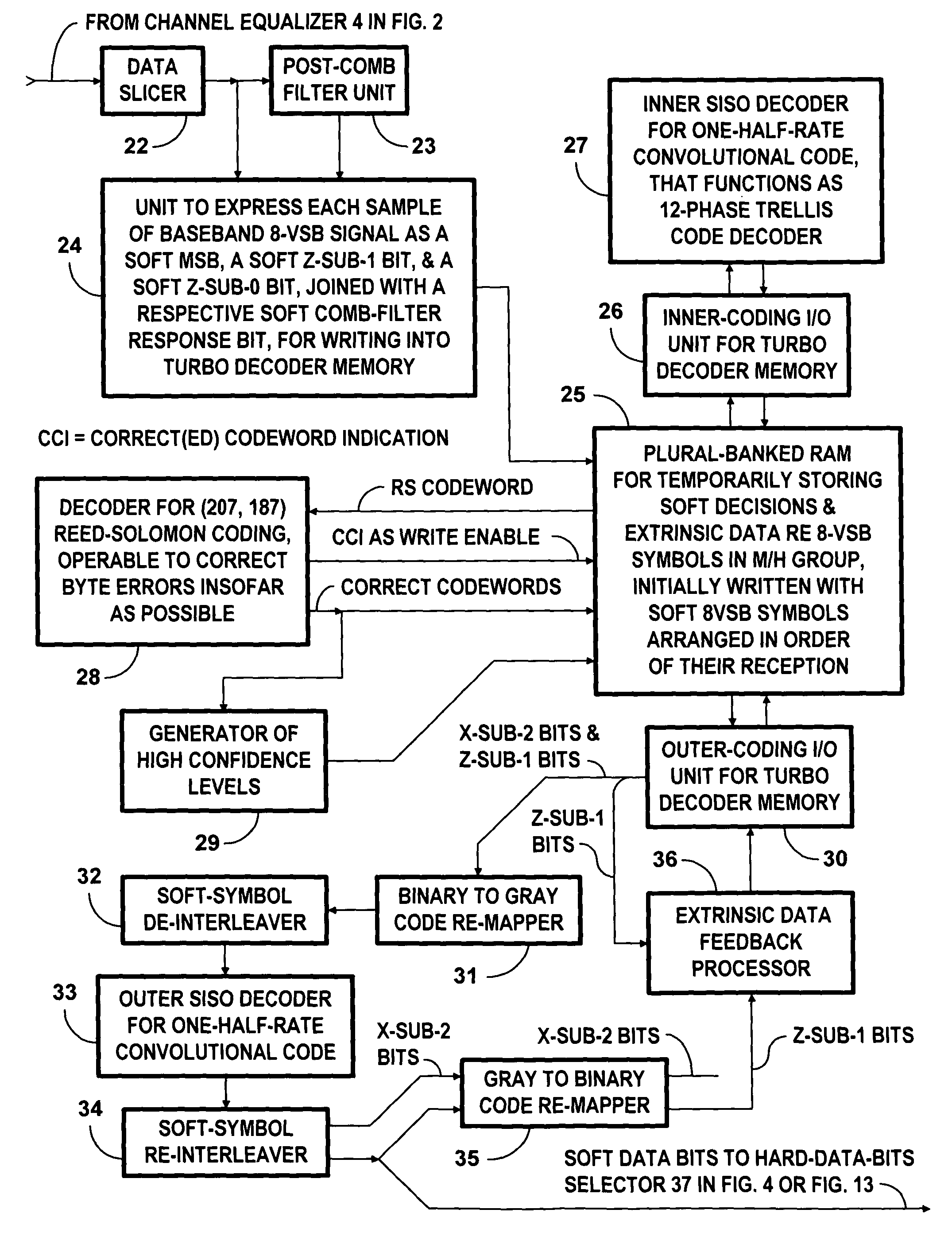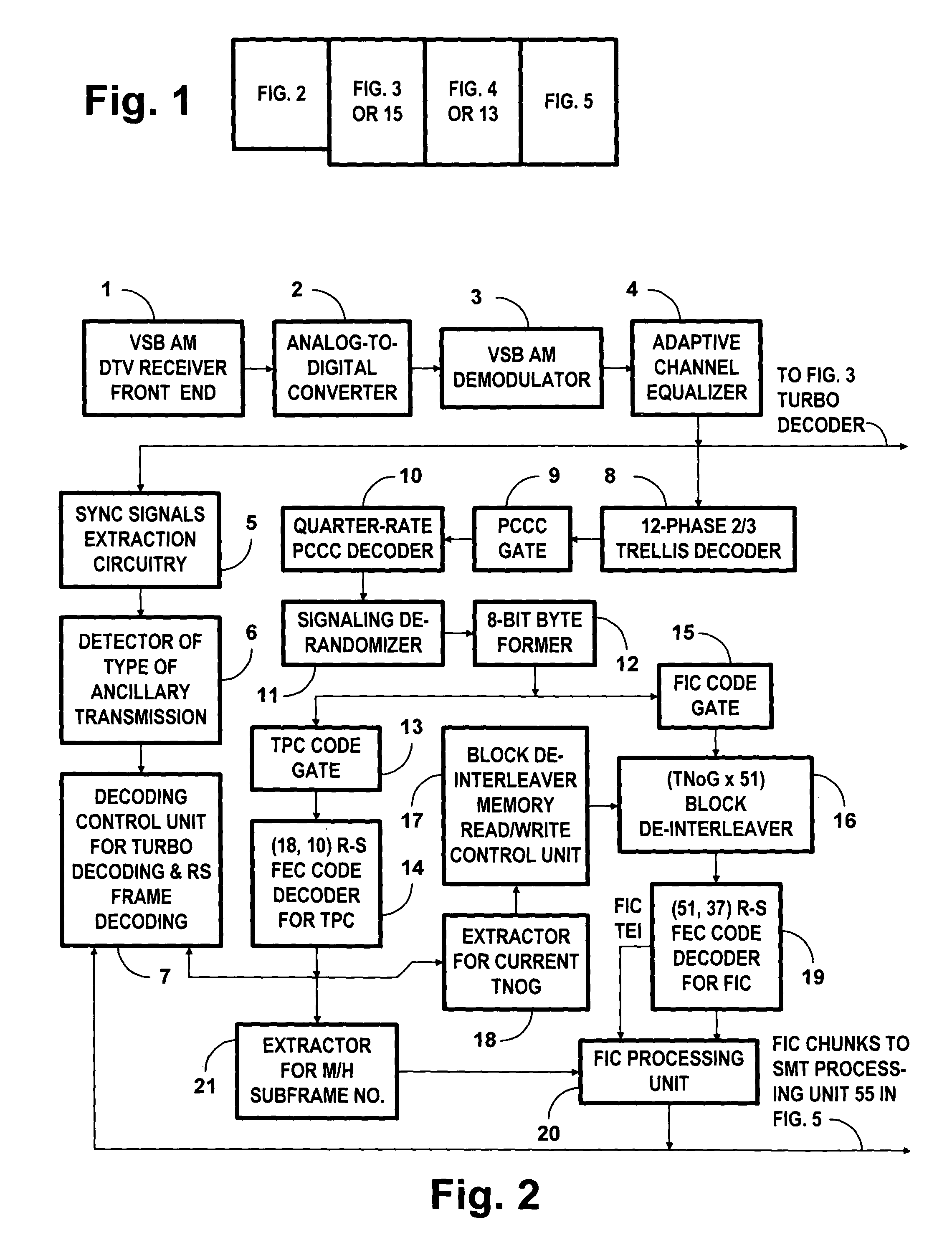Utilization of Reed-Solomon coding in mobile/hand-held digital television receivers
a technology of mobile/hand-held digital television receiver and coding, which is applied in the direction of coding, amplitude demodulation, television systems, etc., can solve the problems of rs coding, apt to contain burst errors, and inability to generate suitable addressing to supply byte de-interleaved bytes of input signal to the decoder for non-systematic input signals
- Summary
- Abstract
- Description
- Claims
- Application Information
AI Technical Summary
Problems solved by technology
Method used
Image
Examples
Embodiment Construction
[0049]FIG. 1 is an assembly drawing that shows how FIG. 2, FIG. 3 or 15, FIG. 4 or 7, and FIG. 5 combine to provide detailed schematic diagrams of various DTV receiver apparatuses for receiving M / H transmissions sent over the air as PCCC portions of an 8-VSB signal as used in digital television broadcasting. These transmissions are as described in detail by U.S. patent application Ser. No. 12 / 928,186 titled “Broadcasting of concatenated-convolutional-coded data by one or more digital television transmitters for diversity reception” and also by U.S. patent application Ser. No. 12 / 928,187 titled “Coding and decoding of 8-VSB digital television signals for mobile / handheld receivers”, both filed 6 Dec. 2010 by A. L. R. Limberg.
[0050]The FIG. 2 portion of DTV receiver apparatus includes a vestigial-sideband amplitude-modulation (VSB AM) DTV receiver front-end 1 for selecting a radio-frequency (RF) DTV signal for reception, converting the selected RF DTV signal to an intermediate-frequenc...
PUM
 Login to View More
Login to View More Abstract
Description
Claims
Application Information
 Login to View More
Login to View More - R&D
- Intellectual Property
- Life Sciences
- Materials
- Tech Scout
- Unparalleled Data Quality
- Higher Quality Content
- 60% Fewer Hallucinations
Browse by: Latest US Patents, China's latest patents, Technical Efficacy Thesaurus, Application Domain, Technology Topic, Popular Technical Reports.
© 2025 PatSnap. All rights reserved.Legal|Privacy policy|Modern Slavery Act Transparency Statement|Sitemap|About US| Contact US: help@patsnap.com



